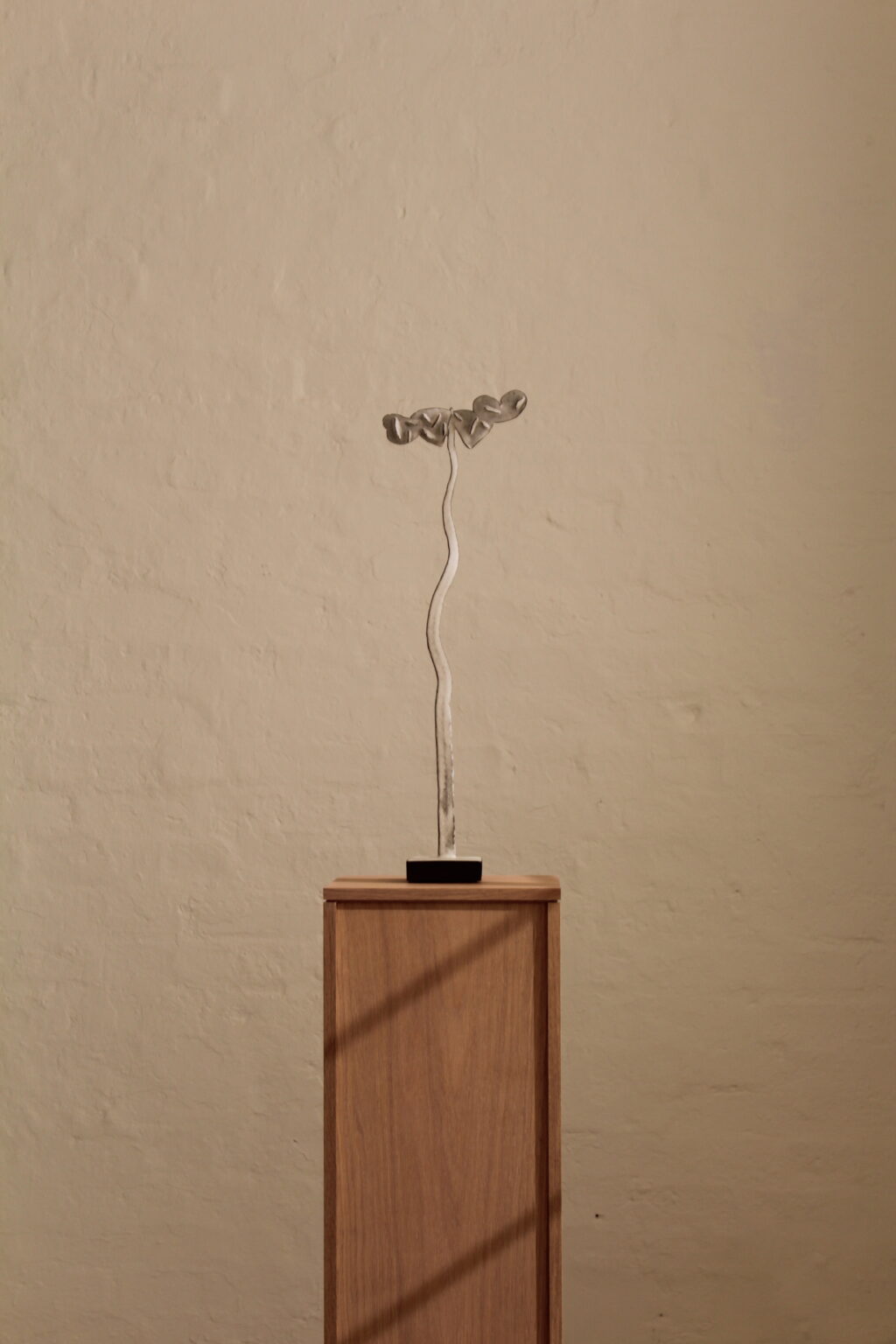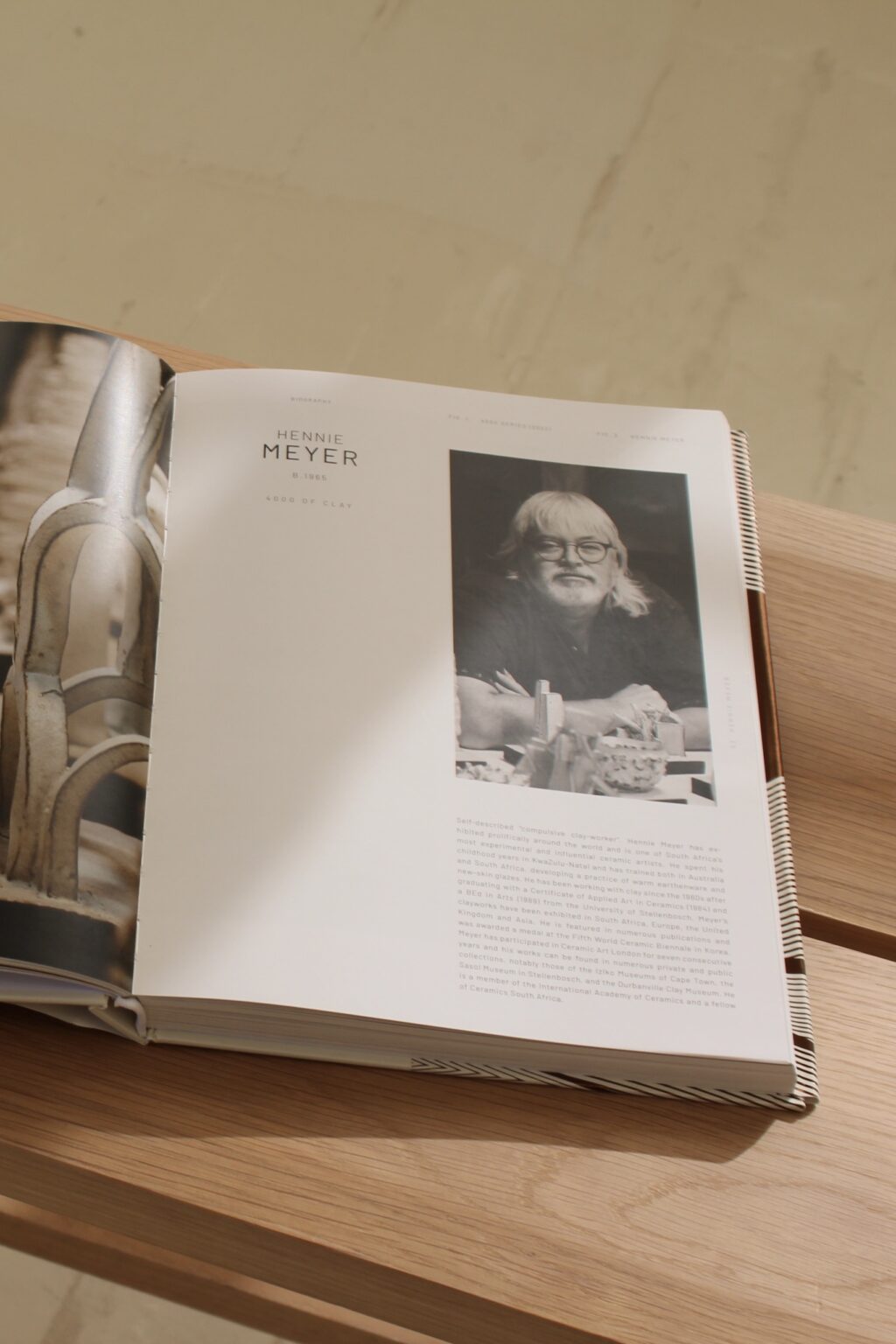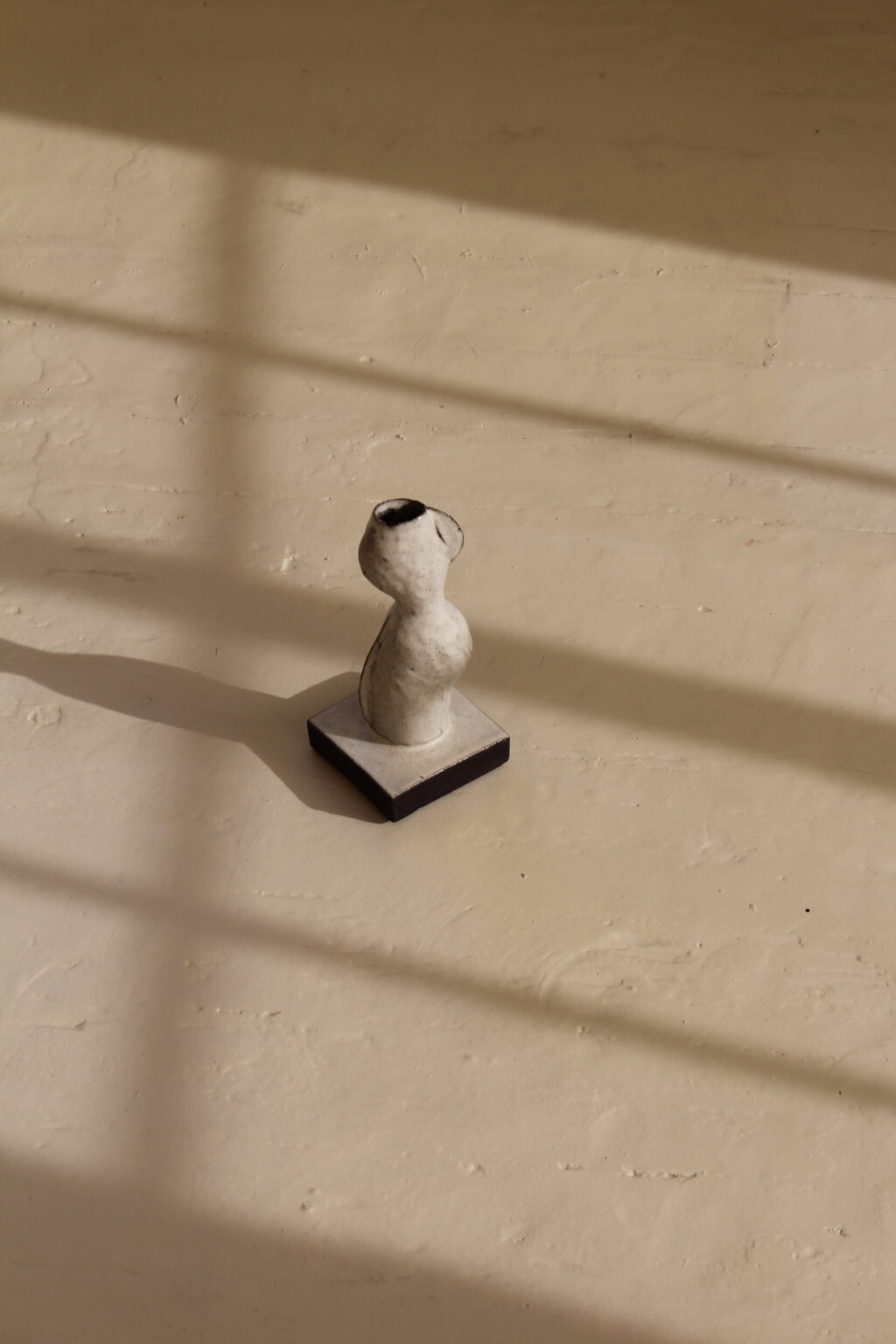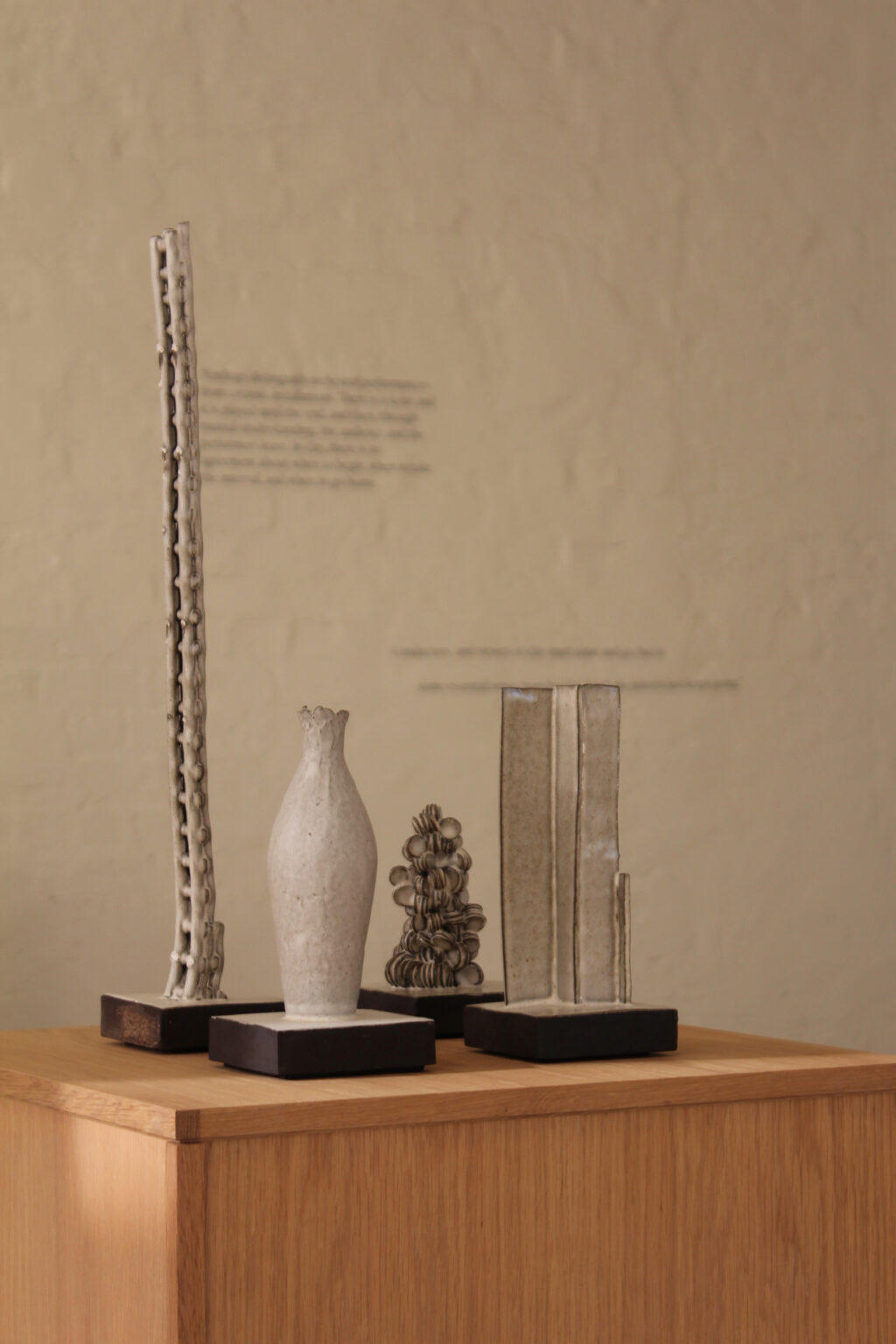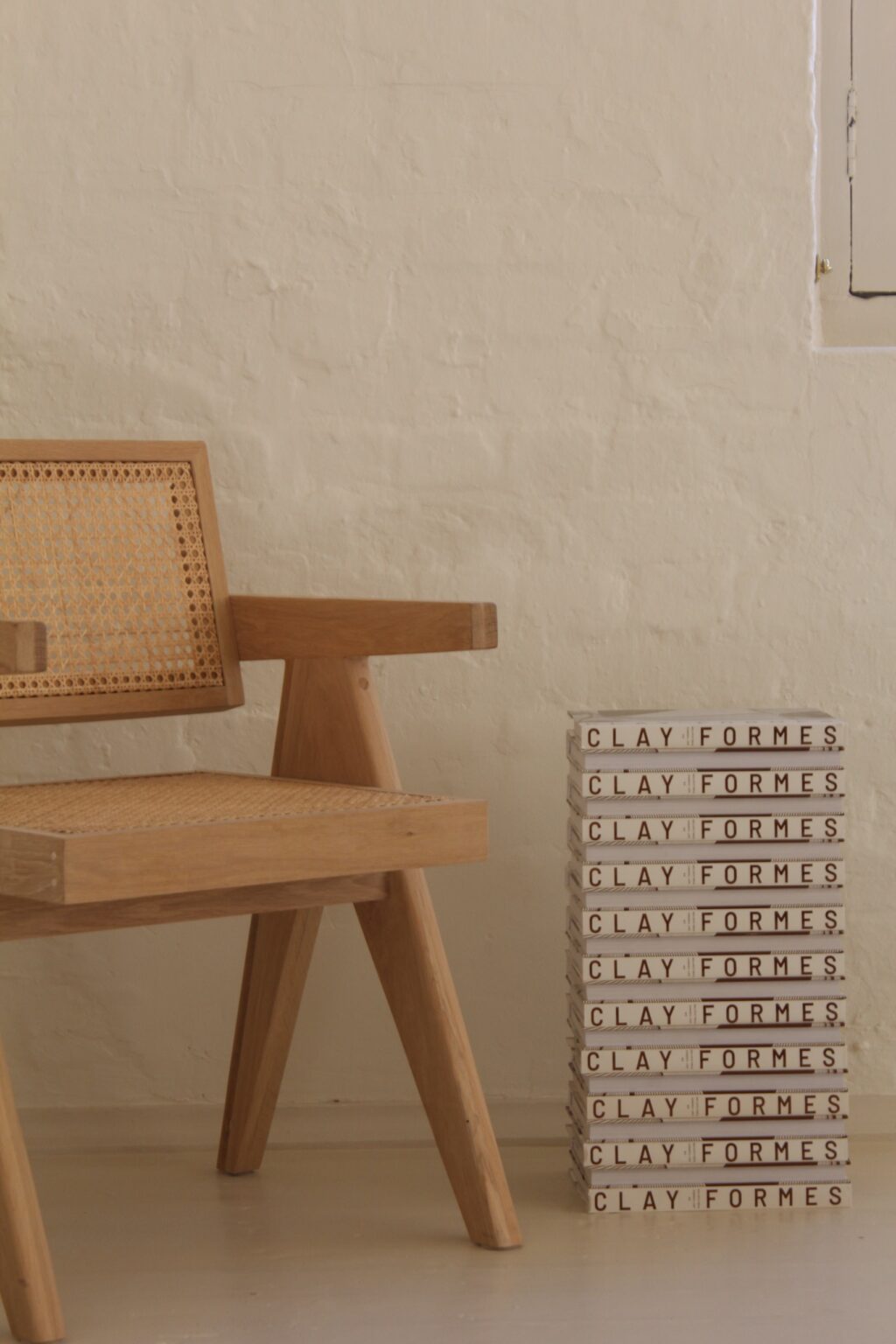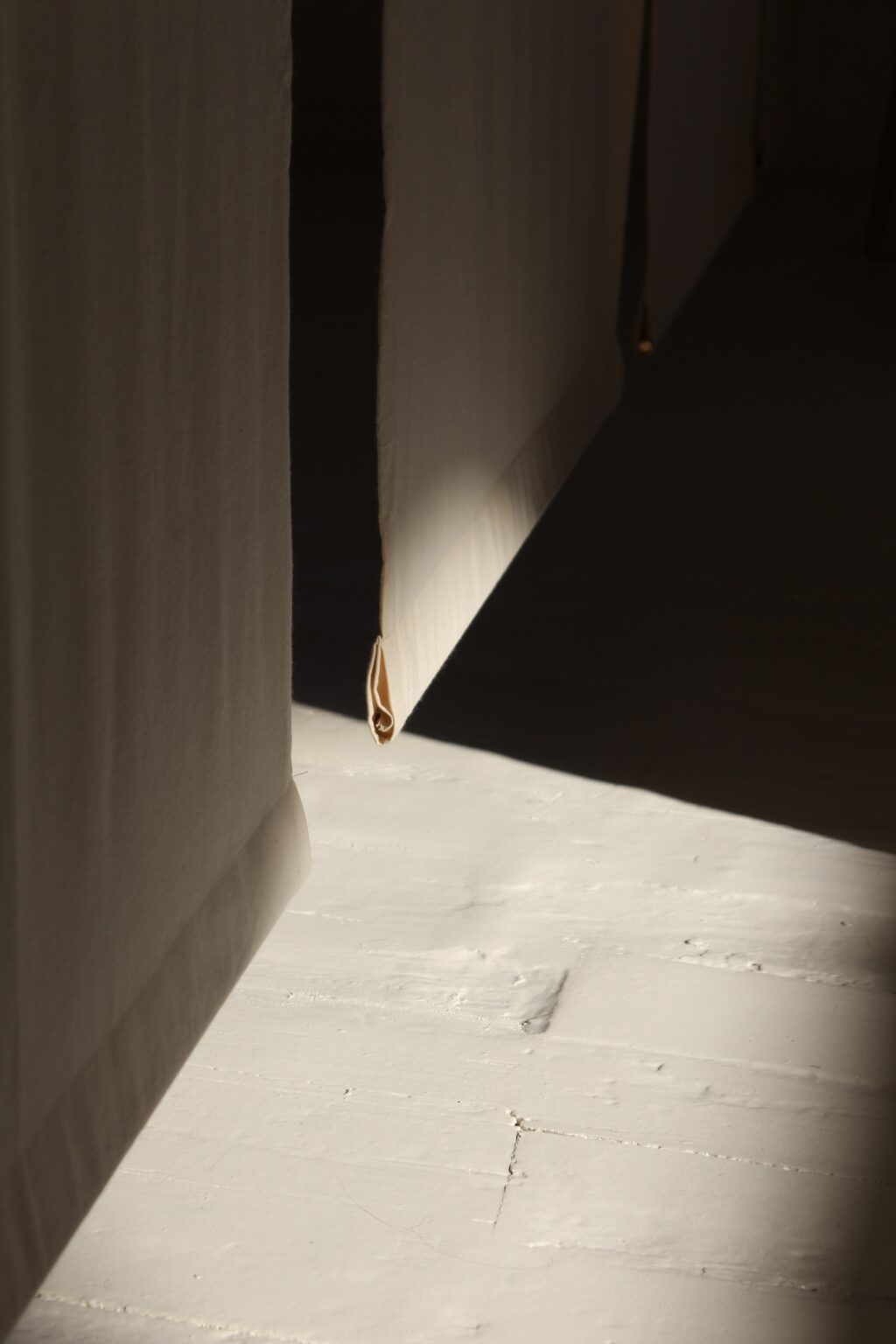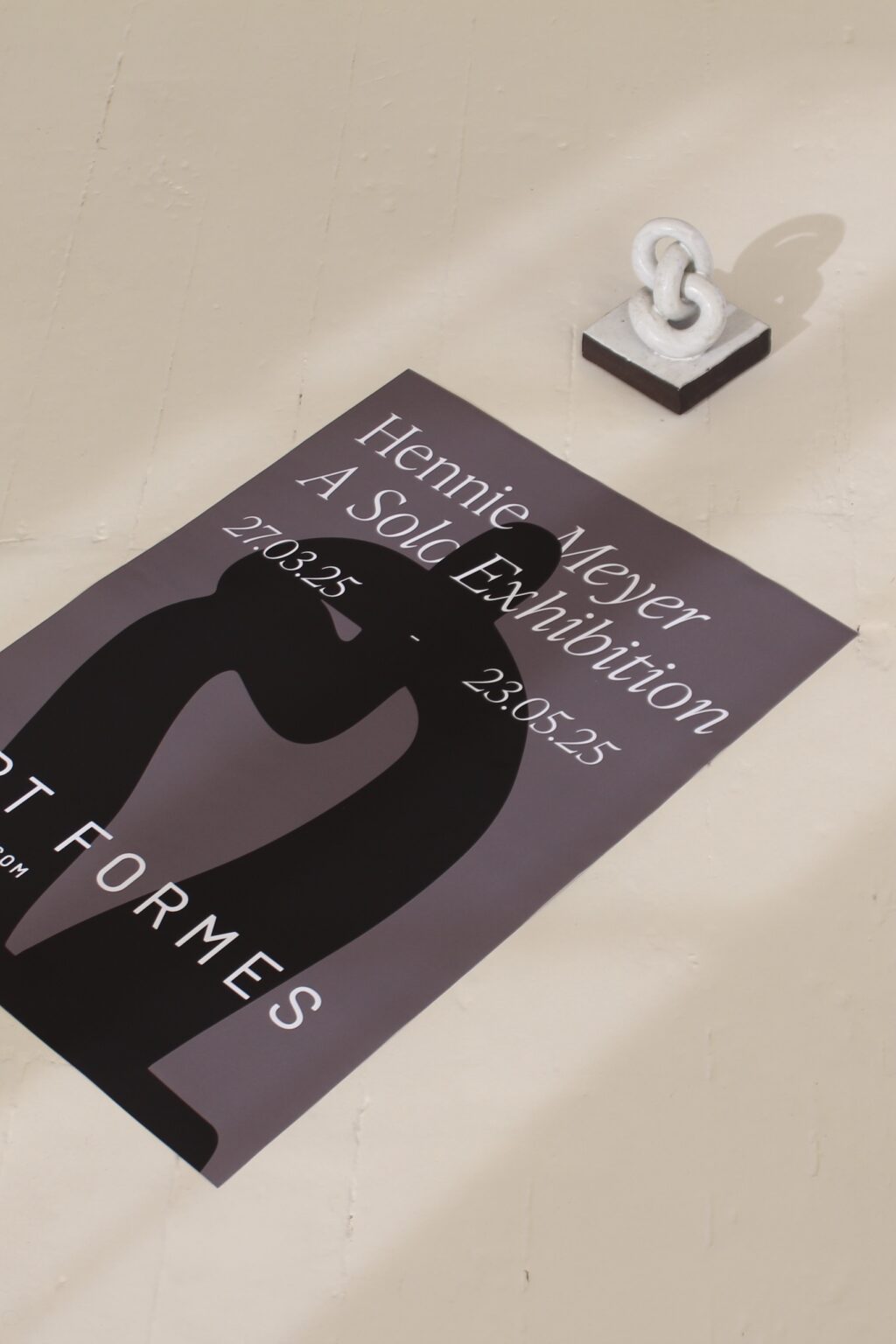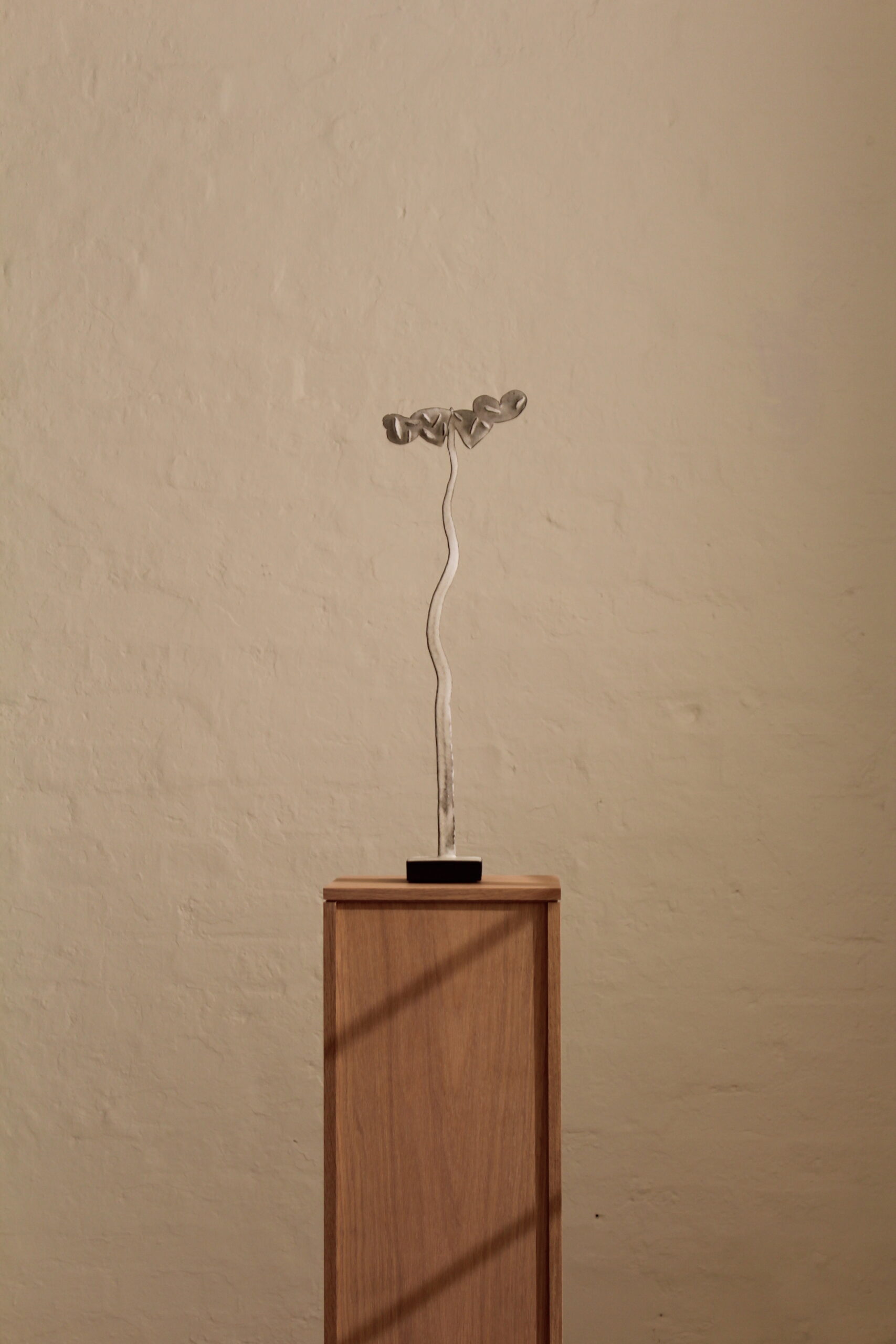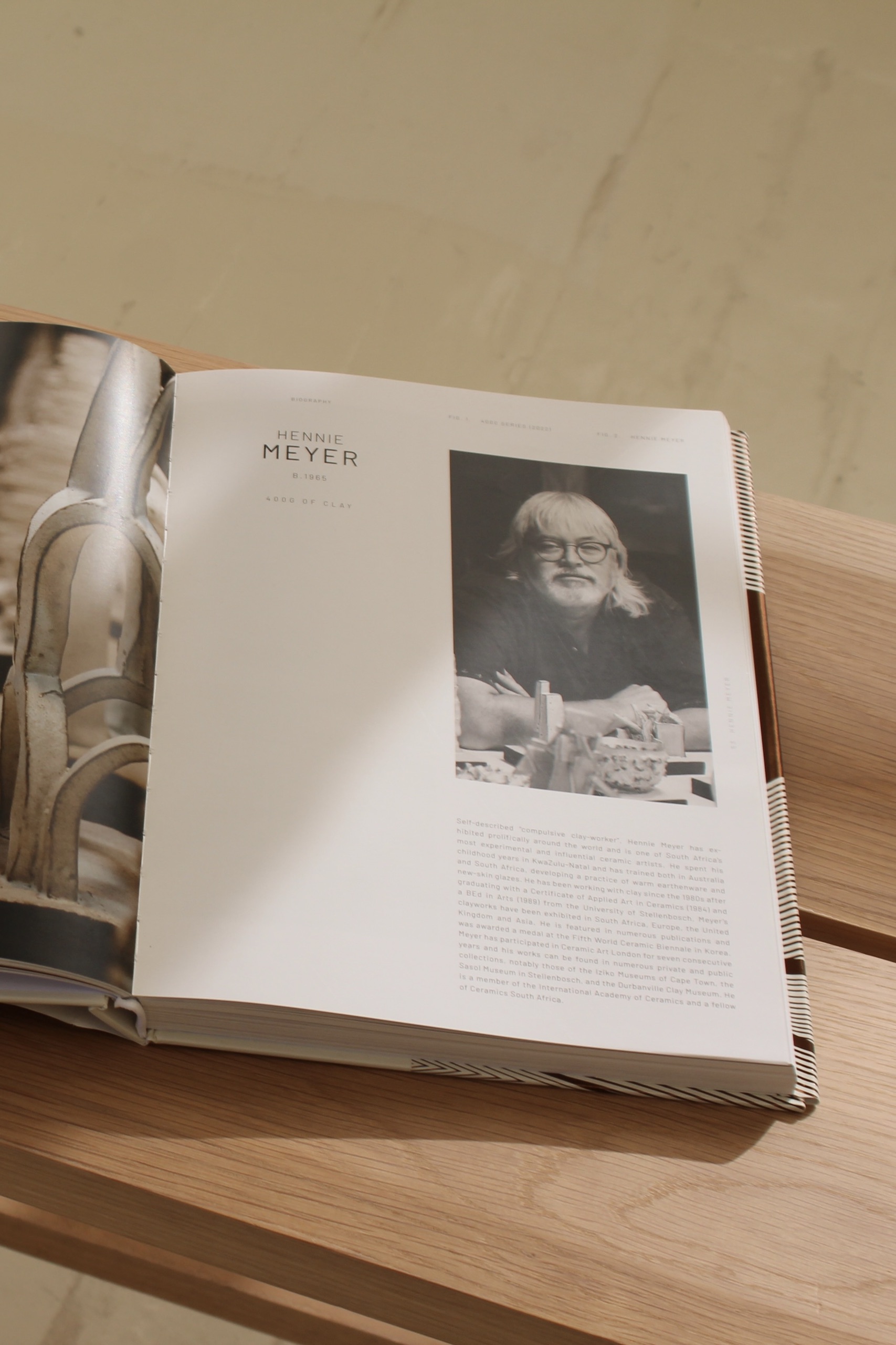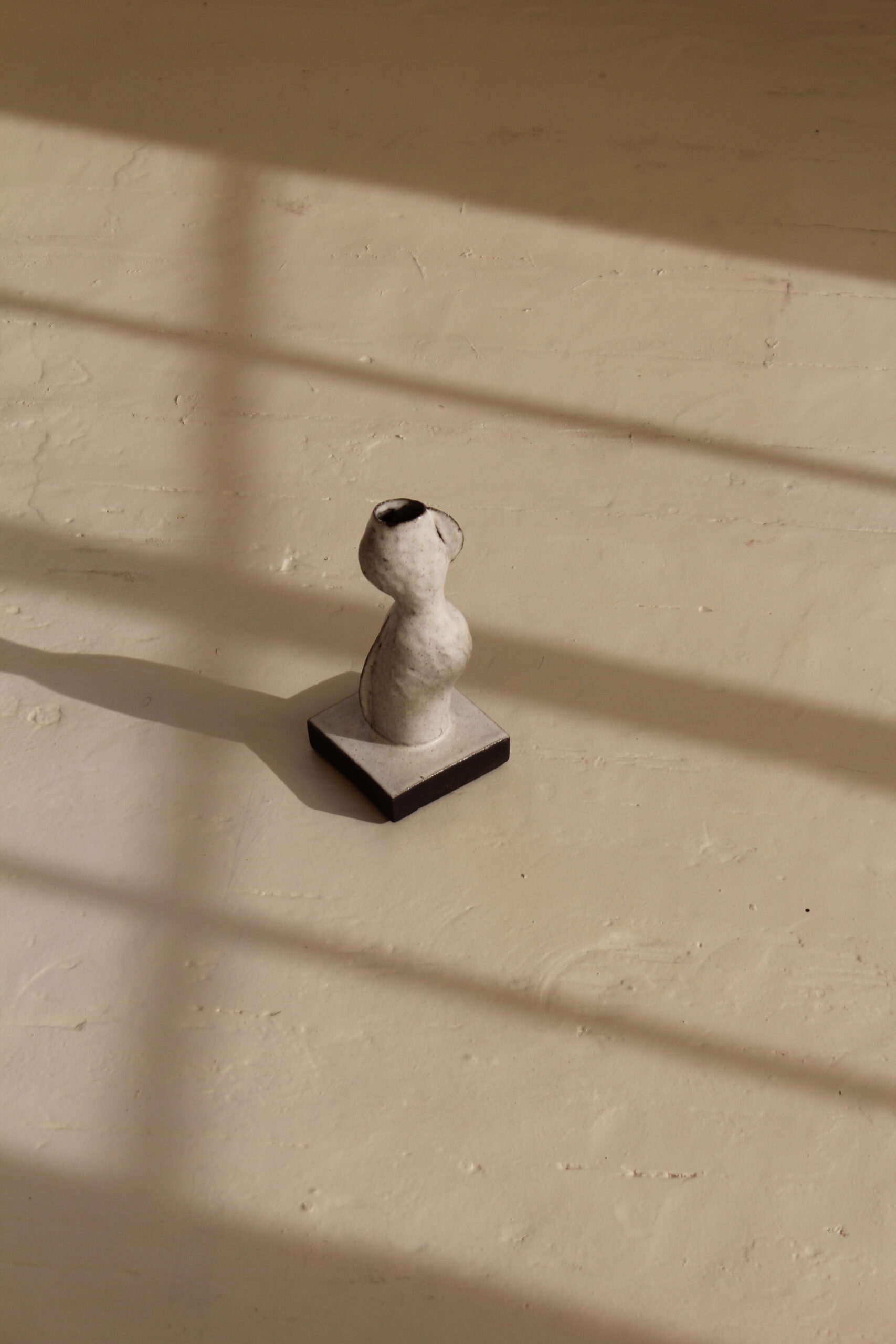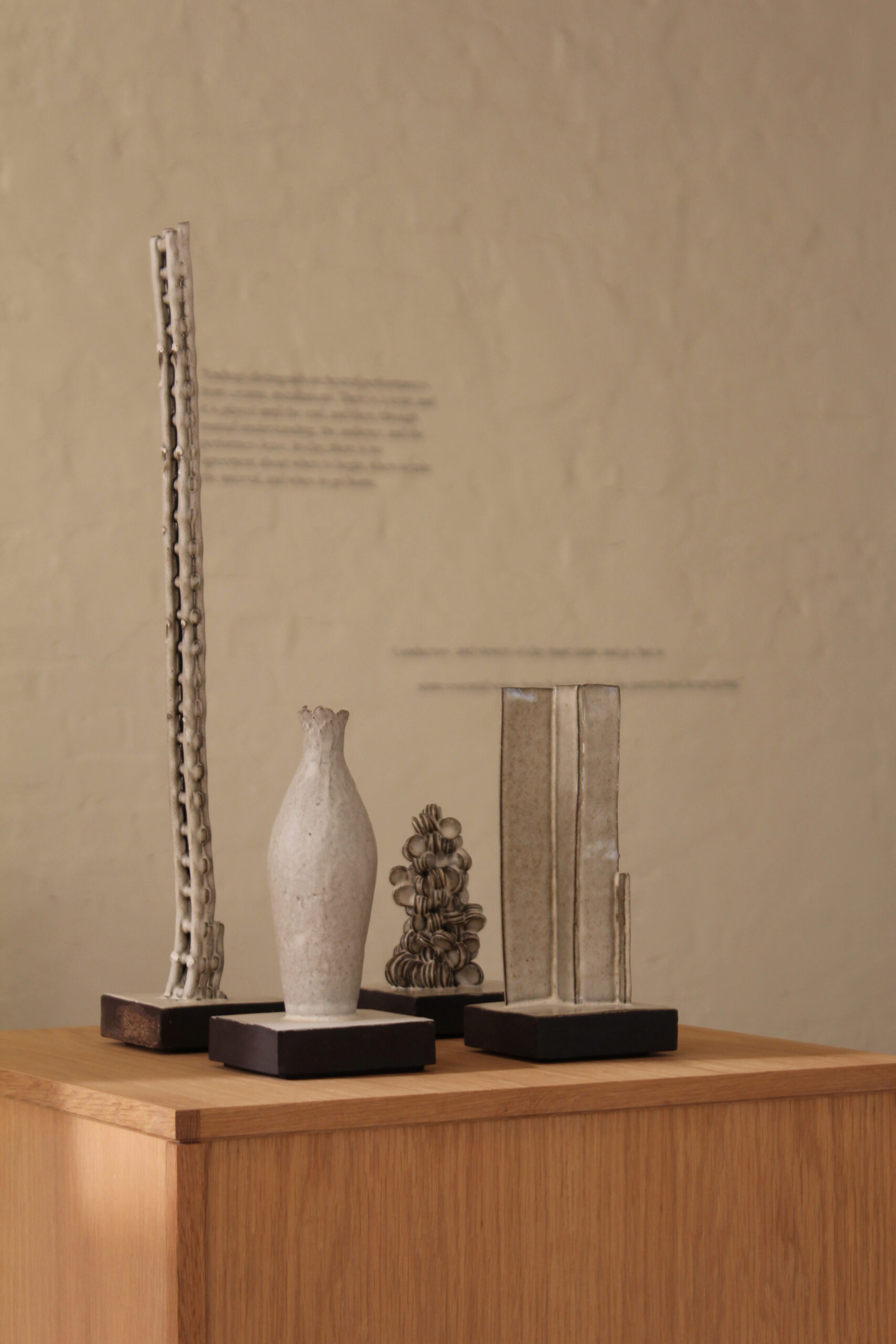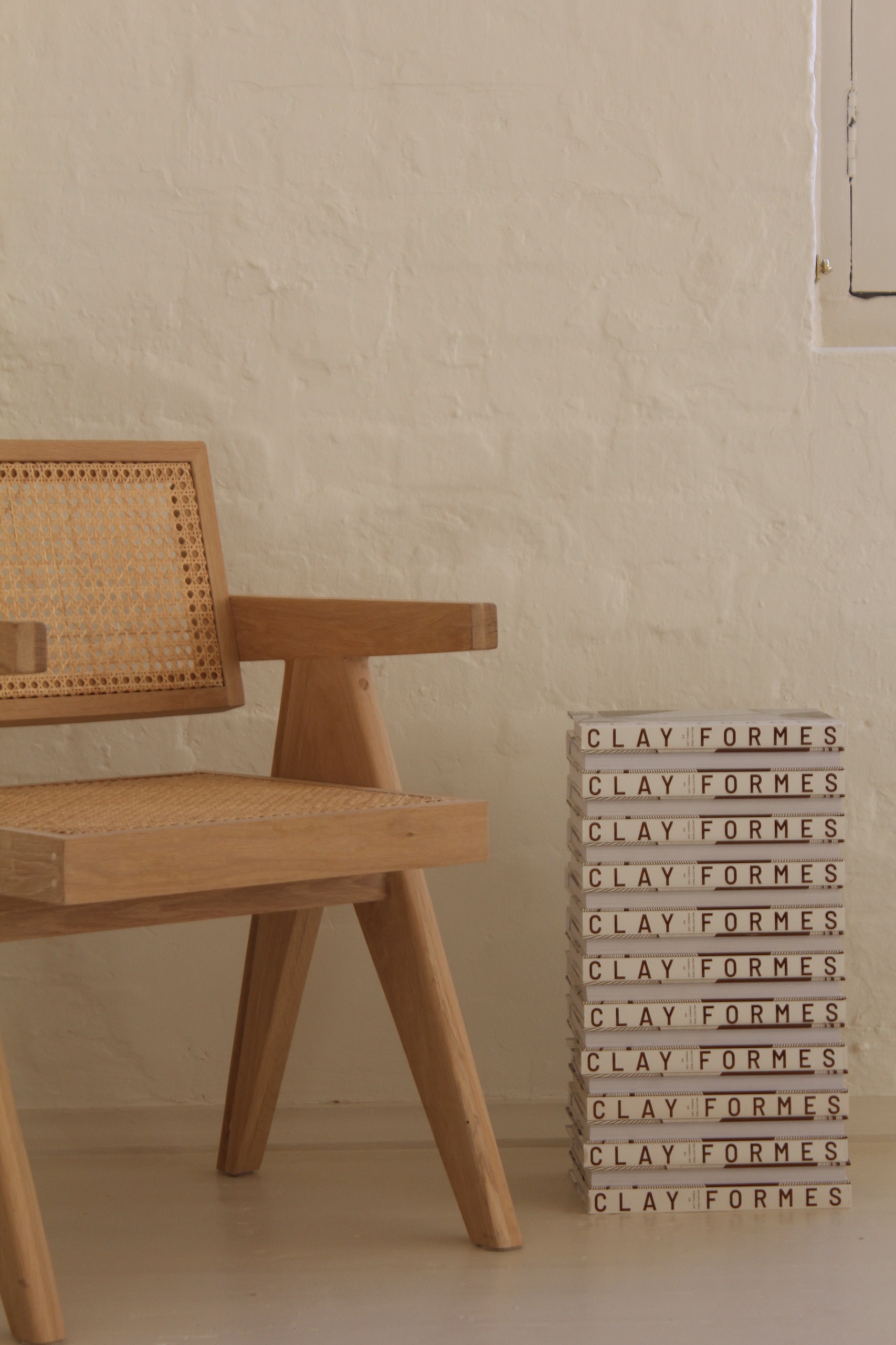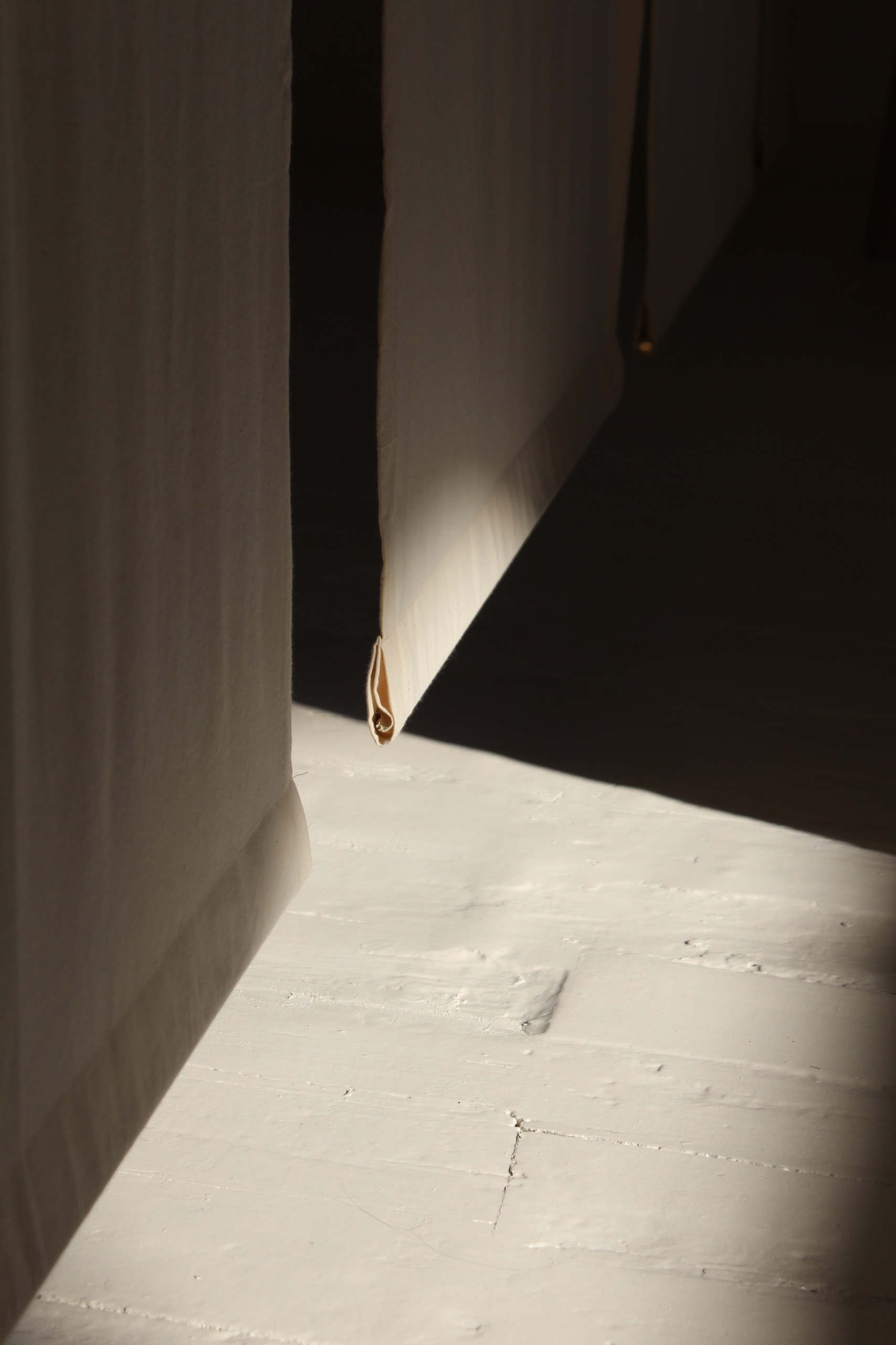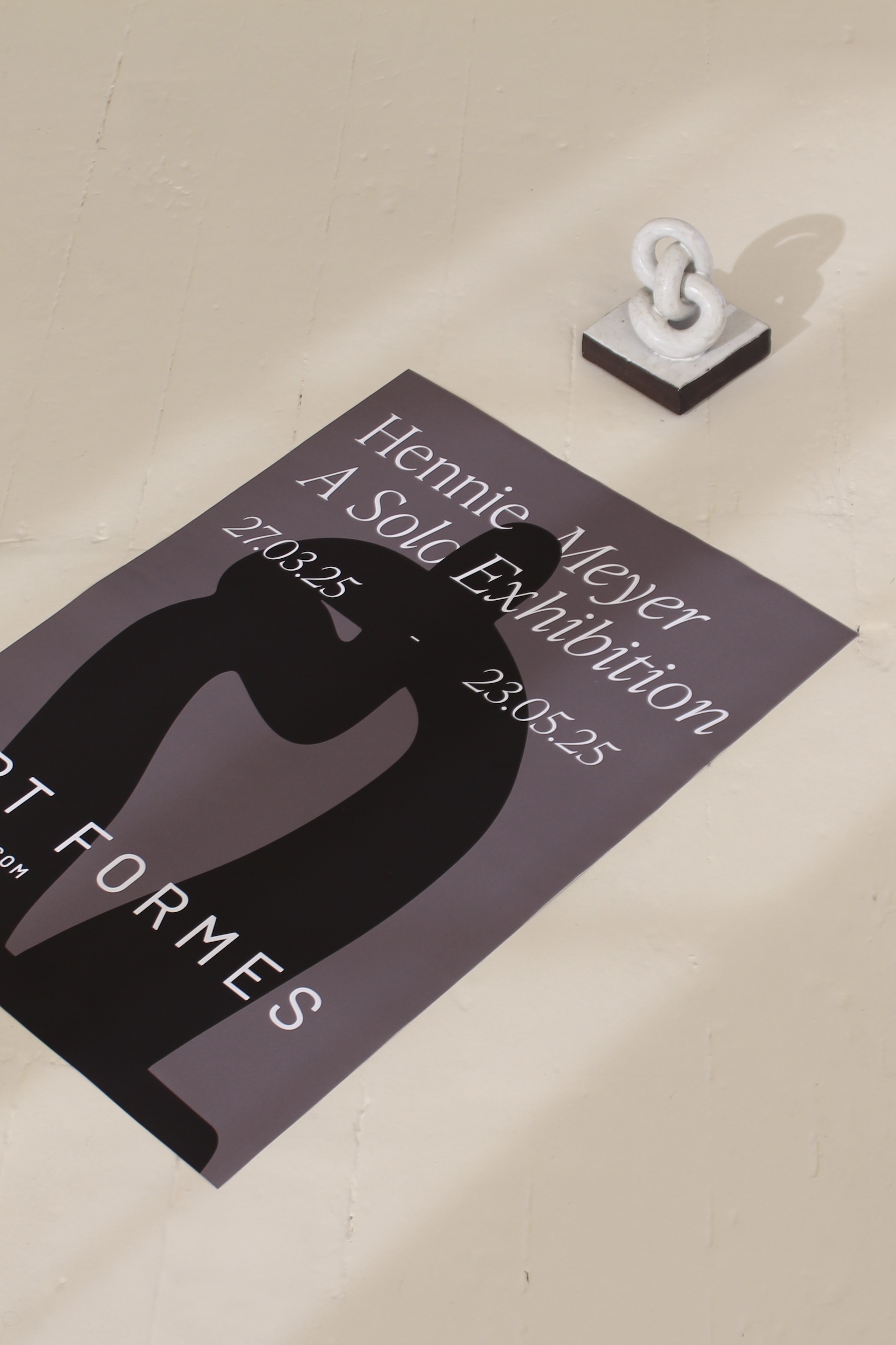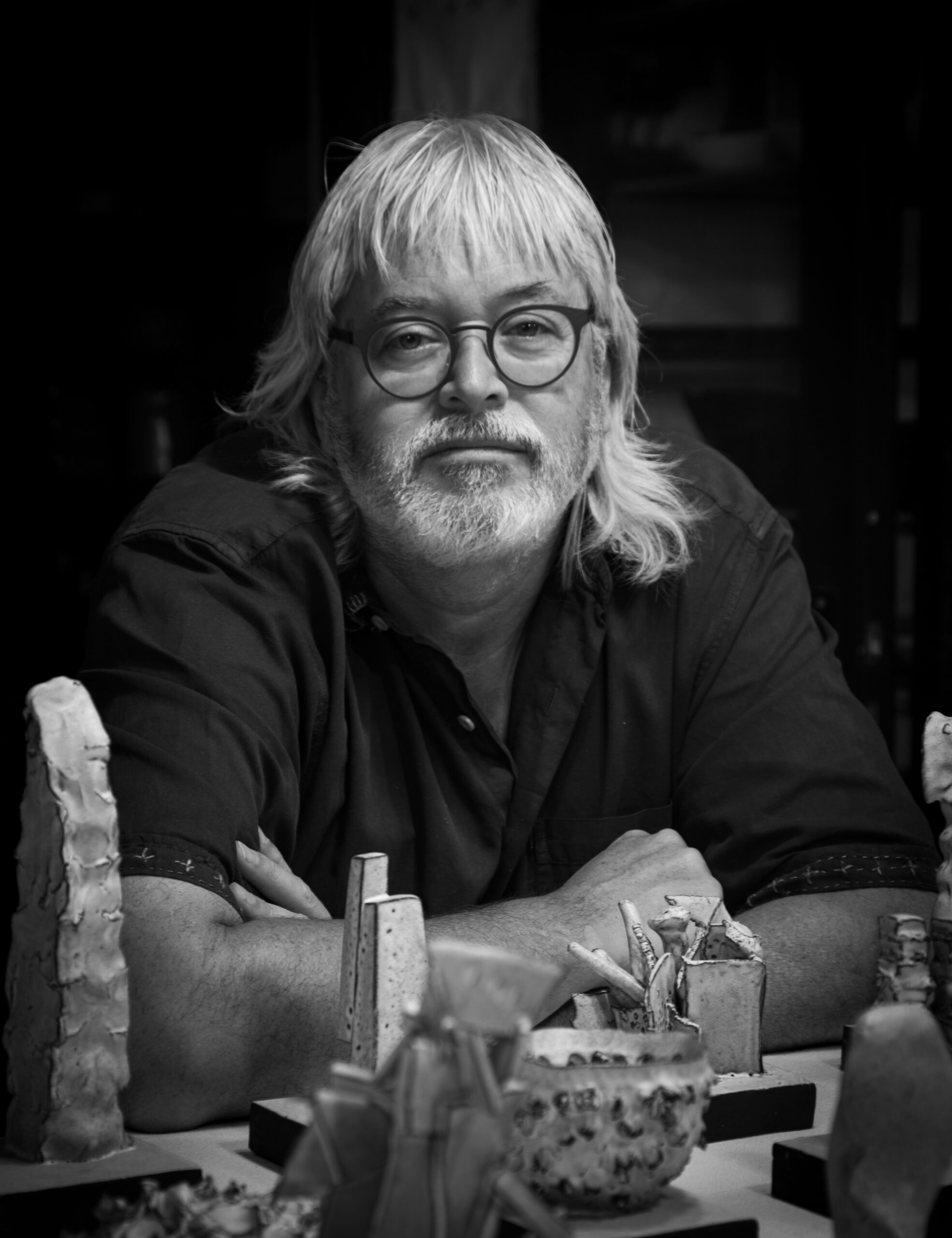Hennie Meyer is one of South Africa’s most versatile ceramic artists. His signature style exceeds allegiances to form and texture; a career-long commitment to experimentation gives rise to a body of work adept at shape-shifting. In warm earthenware and the artist’s own milky glazes, the transformation of familiar domestic objects is an everyday miracle of repetition. Meyer is a worker of repertoires. Individual clay questions are held, in the broader context of the artist’s practice, in a clay-form orchestra: a widely permissive classroom of alternative forms and selves. Both in his own work and in an enduring commitment to mentoring other ceramicists, the clay-worker role of the artist is also facilitatory – attentive to form and gesture. Meyer is a clay conductor of note. Concerned with sequences, series, the score of the individual in the collective and the delicious impossibility of repetition, the artist reminds us that a big thing is first a lot of small things in concert.
Untitled and without the promise of function, the artist’s recent experimental series is a city of things to do with one’s hands. In new-skin glazes, each earthenware form is exactly 400g. This is the defining parameter – beyond it, the scope extends anywhere. Each 400g object could be two thousand raindrops, a mother’s right lung, or the brain of a newborn. Repeated and repeated, the white cube stretches into the form that rises: a re-dreamed chess set, a specimen of sorts, a curious piece of white liquorice.
This 400g series both echoes and stands in contrast to Meyer’s previous work, the functional and installation-based. These objects do not pour or fill or hold in the ways that they might be expected to. But they still do things. Constellated or in cubicles – moving between the cube and the concert – they are undeniably at work. Or at play. They are up to something.
The edition is theoretically endless, and before it is made, each 400g object could be any shape, allowed to think anything. There is a horizonless freedom to it. In the multiplicity of parallel experiences we could be living, we find ourselves in this one. Meyer’s body of work reflects this strangeness – we cannot simultaneously be more than one thing. But we can make multiples, and they can be defined together. Each 400g object is nestled in a series of parallel lives and is also a signifier of a material endpoint. It could have been a pipe-like tower or a curve with handles or a cube or a shape with an arch, but it is not. It is a vessel with windows. Or whatever one might choose to call it, one of many names – it is that.
Endings distinguish orchestral performances from ceramic installations. There is a score and it is played until the end, and then, through mutual understanding, the audience and the performers leave. In clay, there is no agreement about when to begin, when to take the interval, and when to go home. Conductors and viewers of clay must come and go, but in some essential sense, from hand to hand, the pattern just keeps going.
Artist Biography
Self-described “compulsive clay-worker”, Hennie Meyer has exhibited prolifically around the world and is one of South Africa’s most experimental and influential ceramic artists. He spent his childhood years in KwaZulu-Natal and has trained both in Australia and South Africa, developing a practice of warm earthenware and new-skin glazes. He has been working with clay since the 1980s after graduating with a Certificate of Applied Art in Ceramics (1984) and a BEd in Arts (1989) from the University of Stellenbosch. Meyer’s clayworks have been exhibited in South Africa, Europe, the United Kingdom and Asia. He is featured in numerous publications and was awarded a medal at the Fifth World Ceramic Biennale in Korea. Meyer has participated in Ceramic Art London for seven consecutive years and his works can be found in numerous private and public collections, notably those of the Iziko Museums of Cape Town, the Sasol Museum in Stellenbosch, and the Durbanville Clay Museum. He is a member of the International Academy of Ceramics and a fellow of Ceramics Southern Africa.

